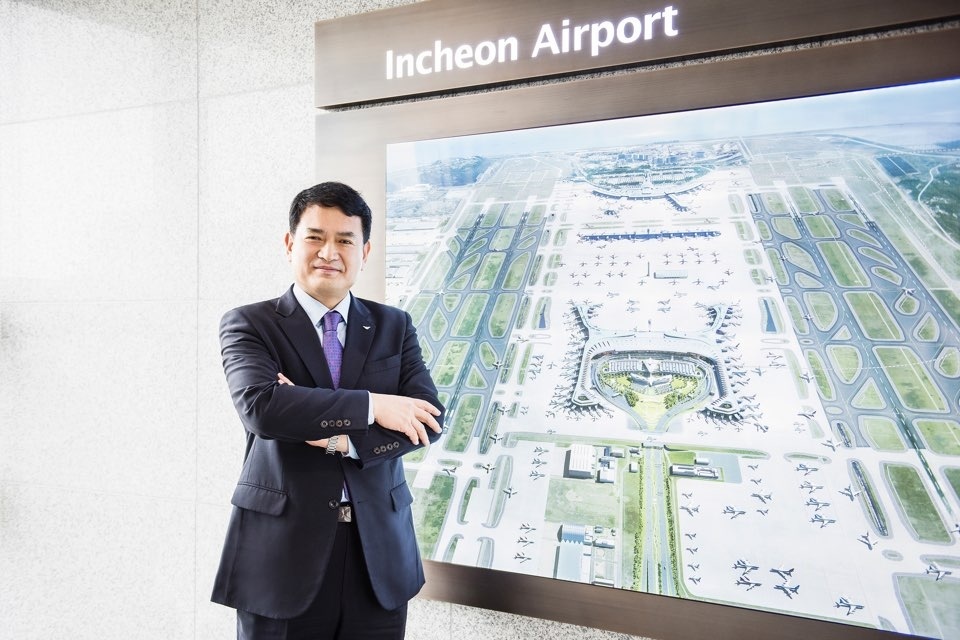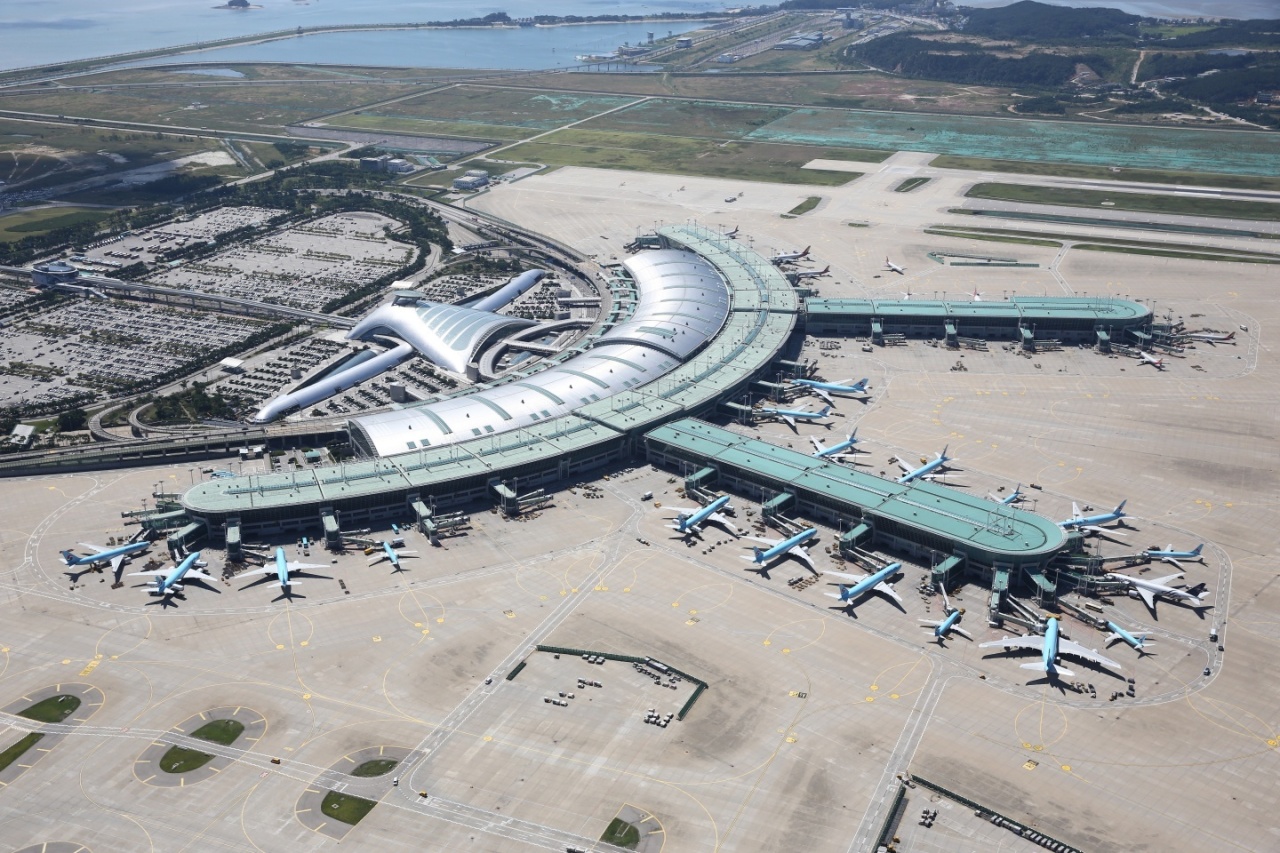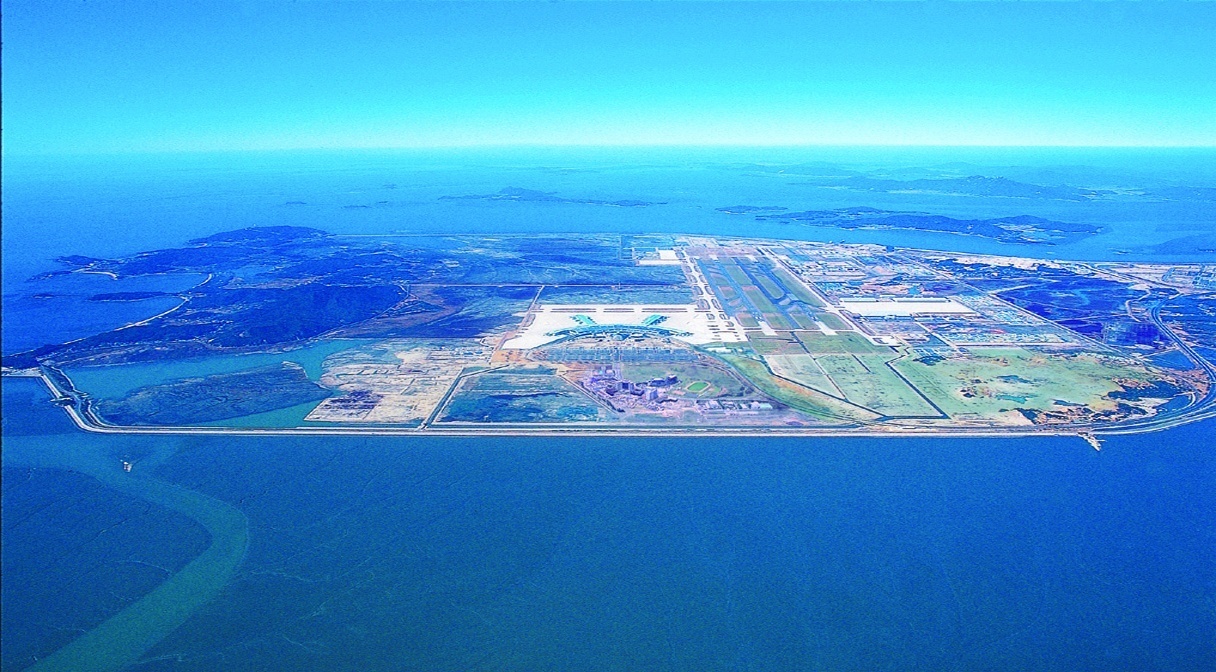Incheon Airport: Korea’s main airport marks 20 years as global hub
A look back on the airport’s last two decades
By Yim Hyun-suPublished : March 29, 2021 - 14:50

Incheon Airport marked its 20th anniversary of operations on Monday.
Since its opening two decades ago as the country’s main gateway airport, it has become one of the busiest in the world, connecting 255 flights between 63 countries.
In 2019, the airport boasted the third-largest cargo traffic and the fifth-largest volume of international traffic, according to Incheon International Airport Corp., the airport’s operator, based on data from Airports Council International.
President of IIAC Kim Kyung-wook thanked those involved in the building of the airport and the government for its support and vowed to improve Incheon Airport’s competitiveness for the next decades.
“In the next 20 years, we plan to pursue the new 2030 vision and strengthen the competitiveness in all aspects of the airport’s operation going forward,” Kim said in a statement.
Since its opening two decades ago as the country’s main gateway airport, it has become one of the busiest in the world, connecting 255 flights between 63 countries.
In 2019, the airport boasted the third-largest cargo traffic and the fifth-largest volume of international traffic, according to Incheon International Airport Corp., the airport’s operator, based on data from Airports Council International.
President of IIAC Kim Kyung-wook thanked those involved in the building of the airport and the government for its support and vowed to improve Incheon Airport’s competitiveness for the next decades.
“In the next 20 years, we plan to pursue the new 2030 vision and strengthen the competitiveness in all aspects of the airport’s operation going forward,” Kim said in a statement.

Under the new slogan “We Connect Lives, Culture and the Future,” the corporation also revealed plans to give more purpose to the venue including creating a “cultural network.”
As part of the plan, media walls stretching 50 meters and pieces of kinetic art featuring traditional Korean culture such as Hangeul, the writing system for the Korean language as well as traditional lacquerware Najeon Chilgi will be put on display in Terminal 1’s arrival hall to welcome international visitors.
The new installments will promote Korea’s image as a leading nation in IT as well as its charming traditions, IIAC explained.
A history museum also opened in Terminal 2 on Monday highlighting the airport’s 20 years of history.
“The largest state-run project in history”
The idea of building a new airport for international flights came about after demand for international travel grew in the country during the late 1980s.
The year after the 1988 Summer Olympics, age restrictions for international travel that were previously in place were lifted, making traveling outside of Korea an option for average citizens of all age groups.
As part of the plan, media walls stretching 50 meters and pieces of kinetic art featuring traditional Korean culture such as Hangeul, the writing system for the Korean language as well as traditional lacquerware Najeon Chilgi will be put on display in Terminal 1’s arrival hall to welcome international visitors.
The new installments will promote Korea’s image as a leading nation in IT as well as its charming traditions, IIAC explained.
A history museum also opened in Terminal 2 on Monday highlighting the airport’s 20 years of history.
“The largest state-run project in history”
The idea of building a new airport for international flights came about after demand for international travel grew in the country during the late 1980s.
The year after the 1988 Summer Olympics, age restrictions for international travel that were previously in place were lifted, making traveling outside of Korea an option for average citizens of all age groups.

As Gimpo Airport struggled to accommodate growing numbers of travelers and issues such as noise in the nearby neighborhoods emerged, an island off the west coast of Incheon known as Yeongjongdo was chosen as the site for the new airport because of its accessibility to Seoul and surrounding areas.
According to IIAC, Incheon Airport is the largest state-run project in the country’s history.
It took nearly 8 1/2 years and a budget of some 5.6 trillion for the first phase of construction with the goal of creating an air transport hub in East Asia.
Some 14,000 workers were deployed every day on average for work on a site, on reclaimed land, that is 18 times the size of Yeouido -- the area of central Seoul that hosts the National Assembly and the finance district.
The project continued uninterrupted despite the 1997 Asian financial crisis that heavily affected South Korea’s economy, and ended up being the world’s first airport to open in the 21st century.
One of the busiest airports in the world
Incheon Airport enjoyed rapid growth over the years. Air traffic volume rose nearly threefold between 2002 and 2019 while the number of international passengers more than tripled during the same period.
As of 2019, flights from a total of 88 airlines between 173 cities in 52 countries flew in and out of the airport, yielding a net income for the 16 consecutive years before the pandemic hit in 2020.
It was also named the world’s top airport by ACI’s Airport Service Quality survey for 12 consecutive years between 2005 and 2016.
According to IIAC, Incheon Airport is the largest state-run project in the country’s history.
It took nearly 8 1/2 years and a budget of some 5.6 trillion for the first phase of construction with the goal of creating an air transport hub in East Asia.
Some 14,000 workers were deployed every day on average for work on a site, on reclaimed land, that is 18 times the size of Yeouido -- the area of central Seoul that hosts the National Assembly and the finance district.
The project continued uninterrupted despite the 1997 Asian financial crisis that heavily affected South Korea’s economy, and ended up being the world’s first airport to open in the 21st century.
One of the busiest airports in the world
Incheon Airport enjoyed rapid growth over the years. Air traffic volume rose nearly threefold between 2002 and 2019 while the number of international passengers more than tripled during the same period.
As of 2019, flights from a total of 88 airlines between 173 cities in 52 countries flew in and out of the airport, yielding a net income for the 16 consecutive years before the pandemic hit in 2020.
It was also named the world’s top airport by ACI’s Airport Service Quality survey for 12 consecutive years between 2005 and 2016.

Recognition of its service has led to new business opportunities for the airport.
In February, the Transport Ministry announced IIAC was tapped as the strategic advisory consulting partner for Poland’s new airport project known as the Solidarity Transport Hub.
The 5.6 billion-won ($5.06 million) deal, the latest addition to the airport’s long list of international business projects, will see IIAC take on multiple responsibilities over the next three years, including reviewing the master plan and writing a white paper for the development and operation of the new airport that is set to take over from Warsaw’s existing Chopin Airport’s.
Since the coronavirus pandemic began however, like elsewhere in the world, Korea’s aviation industry took an unprecedented hit, especially Incheon Airport which recorded an 83 percent dip in passenger traffic.
The figure fell harder for Incheon Airport, as it relies disproportionately on international flights, and for the same reason, a slow recovery is to be expected.
Some 5 million to 16.5 million passengers are expected to visit the airport this year considering the vaccine rollout and its impact on travel confidence in the country, according to IIAC.
With all things considered, the airport is seeking to strategy to respond to the fluctuation in travel demand by, for instance, continuing with its phase 4 construction to strengthen its competitiveness.
In a press conference last month, IIAC president Kim said he expects a “reverse L-shaped recovery” based on data from research institutes for financial forecasting and said the corporation will need to prepare itself for the prediction.
By Yim Hyun-su (hyunsu@heraldcorp.com)
In February, the Transport Ministry announced IIAC was tapped as the strategic advisory consulting partner for Poland’s new airport project known as the Solidarity Transport Hub.
The 5.6 billion-won ($5.06 million) deal, the latest addition to the airport’s long list of international business projects, will see IIAC take on multiple responsibilities over the next three years, including reviewing the master plan and writing a white paper for the development and operation of the new airport that is set to take over from Warsaw’s existing Chopin Airport’s.
Since the coronavirus pandemic began however, like elsewhere in the world, Korea’s aviation industry took an unprecedented hit, especially Incheon Airport which recorded an 83 percent dip in passenger traffic.
The figure fell harder for Incheon Airport, as it relies disproportionately on international flights, and for the same reason, a slow recovery is to be expected.
Some 5 million to 16.5 million passengers are expected to visit the airport this year considering the vaccine rollout and its impact on travel confidence in the country, according to IIAC.
With all things considered, the airport is seeking to strategy to respond to the fluctuation in travel demand by, for instance, continuing with its phase 4 construction to strengthen its competitiveness.
In a press conference last month, IIAC president Kim said he expects a “reverse L-shaped recovery” based on data from research institutes for financial forecasting and said the corporation will need to prepare itself for the prediction.
By Yim Hyun-su (hyunsu@heraldcorp.com)








![[Graphic News] More Koreans say they plan long-distance trips this year](http://res.heraldm.com/phpwas/restmb_idxmake.php?idx=644&simg=/content/image/2024/04/17/20240417050828_0.gif&u=)
![[KH Explains] Hyundai's full hybrid edge to pay off amid slow transition to pure EVs](http://res.heraldm.com/phpwas/restmb_idxmake.php?idx=644&simg=/content/image/2024/04/18/20240418050645_0.jpg&u=20240419100350)





![[From the Scene] Monks, Buddhists hail return of remains of Buddhas](http://res.heraldm.com/phpwas/restmb_idxmake.php?idx=652&simg=/content/image/2024/04/19/20240419050617_0.jpg&u=20240419175937)

![[KH Explains] Hyundai's full hybrid edge to pay off amid slow transition to pure EVs](http://res.heraldm.com/phpwas/restmb_idxmake.php?idx=652&simg=/content/image/2024/04/18/20240418050645_0.jpg&u=20240419100350)

![[Today’s K-pop] Illit drops debut single remix](http://res.heraldm.com/phpwas/restmb_idxmake.php?idx=642&simg=/content/image/2024/04/19/20240419050612_0.jpg&u=)